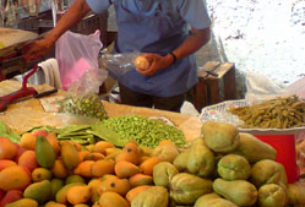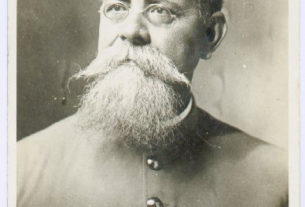Did You Know…?
Did you know that one of the highest, most elegant and sumptuous arts of pre-Conquest Mexico was arteplumaria, the art of feather painting? Used to decorate headdresses, standards, staffs, lances, fans, bracelets, and sandals, arteplumaria was also employed to cover every one of the pre-Cortez ceremonial shields ever recovered or recorded. This rare type of ornamentation was also combined with fabrics to create regal, ceremonial garments for royalty.
This highly developed art was produced by special artisans who had permission to use the feathers of the most sacred bird of the Aztecs, the quetzal, the killing of which was punishable by death. Artisans favored the feathers of the hummingbird and the sword-shaped quetzal feathers due to their brilliant green color, as well as the feathers of the tlauhquechol, a heron that yielded brilliant pink feathers and the zacuán, a yellow coastal bird. A less brilliant green came from parrots, brown from the pajaro vaquero, and black and white feathers from the ayacuán. Red came from a species of macaw.
Artisans used three methods to create their unique feather compositions. The earliest method was to tie the feathers together in a mosaic to create an overall pattern. Then smaller fragments were glued on top to create a representational feather “painting”. Later, artisans employed a layering technique in which feathers were glued in layers, using the resin of the tzauhtli, a Nahuatl word for a rare orchid, to create a holistic design. Finally, artisans developed the technique of sewing the feathers together with a special cotton thread. El Penacho de Moctezuma, the famed red cape of Moctezuma was created by tying the shafts of the feathers together, a technique called enlazado. The cape, which now resides in a Vienna museum, has long been the center of a dispute over its authenticity. Sahagúhn, Mexico’s unequaled scholar of the country’s ancient history asserted that the cape was not Moctezuma’s, although his detractors say it is, complaining that Sahagúhn sought to minimize the value of ancient Mexican artifacts appropriated from Mexico by Europeans. Whatever the truth, one look at the brilliant, shimmering, ethereal cape is enough to breed the most colorful fantasies of ancient Mexico.
Today the art continues. A recent exhibition at CABA, Centro Ajijic de Bellas Artes in Ajijic, Jalisco displayed the work of an artist who glued feathers to a flat surface in such a way as to create three-dimensional designs. The brilliant colors and inherent ability of the feathers to reflect light produced complex optical illusions, including several highly accomplished “mandalas”, or inwardly spiraling circular designs that proved very popular with collectors and art lovers.
This Did you Know provided by Teresa Kendrick


